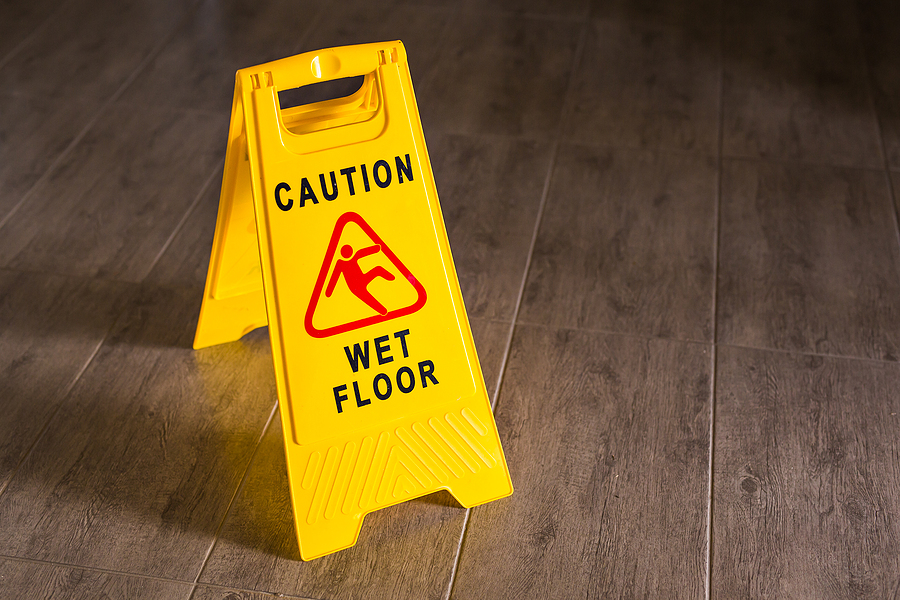What to Do After a Slip and Fall to Build a Strong Claim in Palm Harbor

Slip and fall accidents can happen quickly and without warning. One minute you’re walking through a store or across a parking lot, and the next, you’re on the ground with a serious injury. While these incidents may seem minor at first, they can lead to long-term physical, emotional, and financial challenges. That’s why it’s important to know what to do immediately after a fall—especially if you may need to file a claim.
In Palm Harbor, slip and fall cases fall under premises liability law. Property owners and businesses have a legal duty to maintain safe conditions for those on their property. If they fail in that responsibility and someone gets hurt, they may be held liable. But building a strong case doesn’t happen automatically. It takes clear documentation, timely action, and an understanding of your legal options.
Seek Medical Attention Without Delay
Your health should always come first. If you’re injured in a slip and fall, get medical help right away. Some injuries, like concussions or internal damage, may not be immediately obvious. A medical evaluation not only helps you begin treatment, but it also creates a record linking your injuries to the fall.
Make sure you describe exactly how the injury happened. Mention the location, what caused you to fall, and any symptoms you’re experiencing. These details will become part of your medical record, which can later serve as key evidence in your claim.
Report the Incident to the Property Owner or Manager
It’s important to notify the business owner, property manager, or supervisor as soon as possible. Whether you fell at a grocery store, office, or private home, a formal report helps create an official record of what happened.
Ask for a written incident report if possible, and request a copy for your records. If the property owner refuses to document the fall or won’t give you a copy, make your own written summary and include names, dates, and contact information.
Take Photos and Video of the Scene
Physical evidence is essential in slip and fall cases. If you’re able to do so safely, take photos or video of the area where the fall occurred. Focus on the condition that caused the accident—such as a wet floor, uneven pavement, poor lighting, or debris on the ground.
Be sure to include wide shots that show the surrounding environment, as well as close-ups of the hazard itself. Capture any signs (or lack of signs) warning about dangerous conditions. If the hazard was temporary, such as a spill, the property owner might try to clean it up quickly to avoid responsibility. That makes early documentation even more important.
Get Witness Contact Information
If anyone saw your fall or the condition that caused it, ask for their name and contact details. Independent witness statements can help support your version of events, especially if the property owner disputes what happened.
Even if someone didn’t see the fall itself, they might have seen the hazard or noticed that other people nearly slipped in the same spot. These observations can be useful in showing that the property owner knew—or should have known—about the dangerous condition.
Avoid Making Statements That Can Be Used Against You
In the moments after a fall, it’s natural to feel embarrassed or shaken. But it’s important to be careful about what you say. Avoid apologizing or making comments that suggest you were at fault. Even a casual “I wasn’t watching where I was going” can be used by insurance companies to weaken your claim.
Stick to the facts when speaking with property owners or employees. Don’t guess about the cause of the fall, and avoid discussing your injuries in detail until you’ve seen a medical professional.
Preserve the Shoes and Clothing You Were Wearing
The clothes and shoes you wore at the time of the fall may become relevant in your case. For example, if your shoes had proper tread and were appropriate for the conditions, it helps counter arguments that your footwear caused the accident.
Put these items aside in a safe place and do not wash or alter them. They may be inspected later as part of the investigation.
Document Your Recovery Process
Keep track of your medical appointments, diagnoses, prescriptions, and any recommendations from your doctors. Make notes about how your injuries are affecting your daily life, including pain levels, missed work, and limits on your activities. A personal injury claim in Palm Harbor may include damages for medical costs, lost income, and pain and suffering, so it’s important to have detailed records.
A journal or calendar that tracks your recovery can also help show the ongoing impact of your injuries.
Be Cautious When Dealing With Insurance Companies
After reporting the incident, you may be contacted by the property owner’s insurance company. They might ask for a recorded statement or offer a quick settlement. While this may seem helpful, keep in mind that their goal is to pay as little as possible.
Do not agree to any settlement or provide detailed information without first speaking with a personal injury lawyer. Early settlements often do not reflect the full value of your claim, especially if the long-term effects of your injuries are not yet known.
Consult a Slip and Fall Attorney in Palm Harbor
Navigating a slip and fall claim in Florida involves more than simply showing you were hurt. You must prove that the property owner knew or should have known about the dangerous condition and failed to fix it in a reasonable amount of time. This can be challenging, especially if there is limited physical evidence or if the owner disputes your version of events.
An experienced slip and fall attorney can investigate the incident, gather additional evidence, speak with witnesses, and build a case that supports your right to compensation. They can also negotiate with insurers on your behalf and, if needed, file a lawsuit to pursue damages.
Conclusion
Palm Harbor may be a quiet and welcoming place, but slip and fall accidents happen here just like anywhere else. If you’re injured due to unsafe conditions on someone else’s property, taking the right steps early can make all the difference in the strength of your claim.
From seeking medical treatment and collecting evidence to working with a lawyer who understands local laws, each action you take helps protect your right to recover. The aftermath of a fall can be stressful and painful—but with proper guidance, you don’t have to handle it alone.
